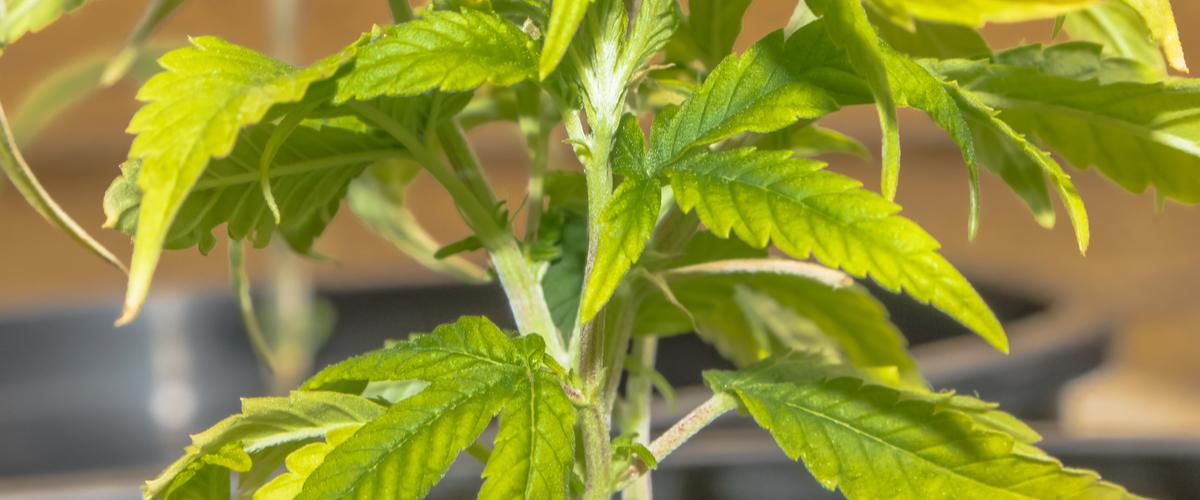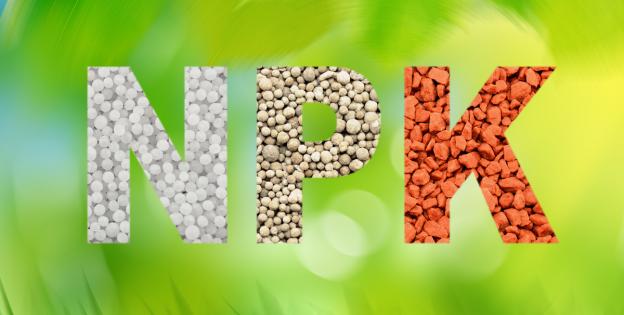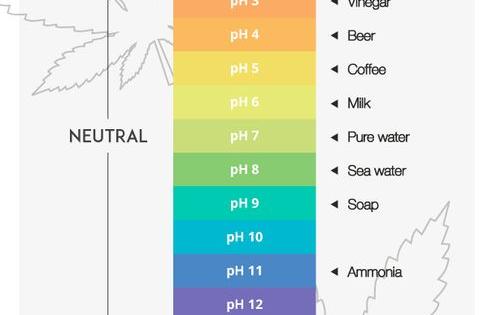- Adequate lighting, proper ventilation, a good substrate and a balanced feeding regime are key aspects to growing great cannabis.
- The last point is probably one of the hardest to deal with, as it involves assessing the needs of the plants by just looking at them, and this, however necessary for proper plant development, often takes an expert eye.
- Read on to find out how to identify at a glance the main nutrient deficiencies and excesses that can affect cannabis plants.

How to identify nutrient deficiencies and excesses in cannabis growing
Primary nutrients or macronutrients

Nitrogen (N) (mobile element): Essential during vegetative growth, nitrogen plays a central role in the formation of leaves and stems, in chlorophyll production and in photosynthesis.
- Nitrogen deficiency: Older leaves near the base of the plant gradually yellow and overall plant development is delayed. Because it is a mobile element, nitrogen stored in older leaves can be used to solve a deficiency elsewhere in the plant. You can easily solve a nitrogen deficiency, bringing colour and vigour back to your plants, by watering with a nitrogen-rich, pH-balanced solution.
- Nitrogen excess: Leaves turn glossy dark green, starting at the margins and spreading out until the whole leaf surface is covered. Tips curl down like eagle claws. To turn nitrogen excess around and get your plants thriving again, flush the substrate in a bathtub for about 15-20 minutes, leave it to dry and add enzymes with the next watering.

Phosphorus (P) (mobile): Just like nitrogen, phosphorus is essential for photosynthesis and plant growth, notably as regards shoot and root formation – this is why many root boosters are rich in phosphorus. During flowering, phosphorus aids flower formation and terpene production.
- Phosphorus deficiency: Plant growth is stunted and new leaves, smaller than in healthy plants, wilt rapidly. Margins curl up slightly and take on an opaque bluish hue, while stems and petioles turn purple with possible brown spots around the veins. If your plants are affected by phosphorus deficiency, all you need to do is apply a phosphorus-rich, pH-balanced solution. Also, bear in mind that phosphorus deficiencies are often caused by excess levels of zinc or iron.
- Phosphorus excess: Phosphorus toxicity is hard to detect because it often blocks the absorption of other elements (potassium, calcium, magnesium, zinc, copper and iron). To address phosphorus toxicity, thoroughly flush the substrate and discontinue fertilisation for three watering sessions, after which you will be able to gradually reintroduce your normal feeding schedule.

Potassium (K) (mobile): Together with phosphorus, potassium contributes to a healthy root system, while in association with nitrogen, it aids chlorophyll production and flower development. Likewise, it makes plants significantly more resistant to fungal diseases and other sources of stress.
- Potassium deficiency: Plant growth is altered and leaf margins curl, turn brown and dry out, followed by the yellowing of the remaining leaf surface, which starts to show brown spots. The problem can be easily solved by applying a potassium-rich, pH-balanced solution.
- Potassium excess: Like excess phosphorus, excess levels of potassium can block the absorption of other elements including magnesium, manganese, zinc and iron. The solution is the same as for excess phosphorus.
Secondary nutrients

Sulphur (S) (immobile element): Essential to chlorophyll production and to the organoleptic profile of flowers, sulphur plays a central role in the formation of the plant's structural organs, playing a part also in the production and regulation of hormones and vitamins.
- Sulphur deficiency: Plant growth is delayed and leaves develop chlorosis. Petioles turn purple and stems become brittle. Smaller leaves can distort and curl up slightly before wilting and dropping. During flowering, some buds become necrotic. You can solve this deficiency by using Epsom salt or a sulphur-rich fertiliser.
- Sulphur excess: Plant growth is drastically delayed, with leaves taking on a dark green hue and leaf tips wilting and drying out. Sulphur toxicity is rarely seen in cannabis, as the element is generally well managed by plants without any need for intervention.
Calcium (Ca) (immobile): Secondary element essential to cell wall and tissue formation and strengthening. Plays a part in root development and contributes to nutritional balance with its buffering effect, giving the plant some control over certain nutritional excesses.
- Calcium deficiency: Growth is delayed, notably at the roots, and the plant becomes less vigorous. Leaves distort, developing irregular margins and curling tips. This affects also young leaves, which show discoloration and wither rapidly. During flowering, flower production slows down until it stops altogether. You can easily tackle calcium deficiency with a calcium-rich fertiliser.
- Calcium excess: Excess calcium can block the absorption of other elements such as potassium, magnesium, manganese and iron. The best solution here is to clean the roots thoroughly and to feed small amounts of a fertiliser containing all the micro and macronutrients necessary for proper plant development.

Magnesium (Mg) (mobile): Crucial for chlorophyll production and photosynthesis, magnesium aids in enzymatic activation and in nutrient absorption.
- Magnesium deficiency: Symptoms of magnesium deficiency are very similar to that of lack of nitrogen. Here again, older leaves near the base of the plant turn gradually yellow (chlorosis), progressing up the plant with discoloured leaves that look distorted from the base to the tip. Again, the solution is an easy one: just apply amagnesium-rich fertiliserand adjust the pH as necessary.
- Magnesium excess: While not very frequent, excess magnesium can block the absorption of calcium. As with other nutritional excesses, we recommend that you flush the substrate thoroughly and then use a fertiliser containing all the necessary nutrients for proper plant development – apply a small amount with the next watering after adjusting the pH.
Micronutrients

Iron (Fe) (non mobile): Iron is vital for photosynthesis, chlorophyll production and nitrate and sulfate assimilation. The element is involved also in plant respiration (proper functioning of the enzymatic systems).
- Iron deficiency: Leaves and young shoots yellow gradually starting at the petiole, while veins stay green. As deficiency progresses, interveinal chlorosis shows also on older growth, affecting all the leaves in the plant. Where symptoms are not promptly treated, leaves become necrotic and eventually drop. You can solve this deficiency by thoroughly washing the roots with a dilute solution containing iron, zinc and manganese – distinguishing between iron, zinc and manganese deficiency, which often occur simultaneously, can be rather tricky, this is why the three elements should be applied together.
- Iron excess: Leaves turn bronze in colour and develop dark brown spots. You can counter excess iron by flushing the substrate with a highly dilute nutrient solution – use a container that is three times the volume of the pot.

Zinc (Zn) (mobile): Plays a major role in chlorophyll production and is essential for ensuring healthy plant tissues.
- Zinc deficiency: Plant growth is delayed and young leaves show interveinal chlorosis. New shoots become stunted and shrivel, while leaf tips discolour and burn. During flowering, buds become distorted and brittle, eventually drying out. The solution is the same as for iron deficiency.
- Zinc excess: Zinc excess is quite hard to treat, as in most cases the plant dies almost instantly from an iron deficiency caused by the excess levels of zinc.

Manganese (Mn) (immobile): Plays a major role in photosynthesis and aids in the formation of chloroplast membranes (cellular development of the plant).
- Manganese deficiency: Young leaves show interveinal chlorosis followed by necrotic spots, which gradually spread to older leaves. General plant growth slows down or stops altogether. The solution is the same as for iron and zinc deficiency.
- Manganese excess: Young leaves develop a type of chlorosis characterised by dark orange to rust brown mottling, which gradually spreads to older leaves, significantly affecting plant vigour. This causes the plant to transpire more than necessary, eventually leading to iron and zinc deficiency.
Boron (B) (immobile): Boron is something of a biochemical mystery that has still not been resolved. All that is known is that it plays a part in cellular division and differentiation, in pollen production and in plant respiration and maturation.
- Boron deficiency: Root growth stops and the tips become swollen. New shoots near the top of the plant look burnt – as if too close to a sodium lamp (HPS) – and distort, symptoms then progressing to older leaves. Severe deficiency sees thicker shoots and leaves with necrotic spots and discoloured margins, followed by overall discoloration and leaf drop-off. Oftentimes, the inner structure of roots becomes mushy, creating an ideal environment for disease outbreaks and fungal growth. To bring back the normal appearance of the plant, dissolve 0.05 grams of boric acid in four litres of water and apply the solution with the next watering.
- Boron excess: Yellowing of leaf tips and necrosis of leaf margins spread out until covering the whole leaf surface, which leads to eventual leaf drop-off. Unfortunately, there is no established method for dealing with boron toxicity. In any case, you can always try flushing the substrate and applying a broad-spectrum fertiliser in small amounts.
Molybdenum (Mo) (immobile): Used in small amounts by plants, molybdenum forms an integral part of two major enzyme systems that convert nitrate to ammonium.
- Molybdenum deficiency: While not very common in indoor grown-cannabis, molybdenum deficiencies lead to delayed plant growth and yellowing of older leaves, with possible interveinal chlorosis. As deficiency progresses, the yellowing gradually intensifies and the leaves curl, with young leaves becoming narrower, curled and eventually dying if deficiency is severe. Low levels of molybdenum are often accompanied by low levels of sulphur. The problem can be easily solved by feeding a solution of water (4 litres) and molybdic acid or ammonium molybdate (0.01 grams).
- Molybdenum excess: Commoner than deficiency, molybdenum toxicity can lead to lack of iron and copper (from 0.2 ppm).
Happy harvesting!





Comments from our readers
Read comments in other languages:
Did you like this post?
Your opinion about our seeds is very important to us and can help other users a lot (your email address won't be made public).